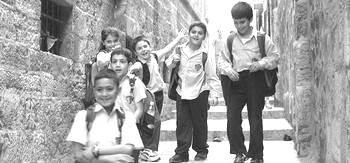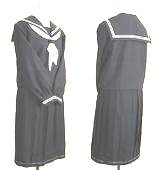题目内容
As China’s national treasure,giant pandas are deeply loved by people.Almost all of pandas live in Sichuan Province in Southwest China.Pandas there are well—protected,especially baby pandas.Before the birth of a baby panda,the mother panda will find a cave and make it into a den with bamboo.The mother panda will give birth to the baby panda in September and later the den will become a room for the young baby.The mother panda will try her best to keep the den quite clean.For the first three weeks,the mother will hold her baby.After two weeks the colors(white and black) on the baby panda’s body will be clear.However,the baby won’t be able to go out alone until it is 3 months old.
A young panda starts to eat soft bamboo shoots by the time it is about six months old. Pandas’ food is mainly made up of bamboo.As time goes by,the little panda will go out for food with its mother.By this time,the baby is much bigger.The next spring,the little panda is really free from its mother and begins to live its own life.Usually pandas live to be 12—14 years old.In fact,it is hard to keep a young panda alive before it is old enough to live by itself.Nowadays the number of giant pandas is smaller than 1,000.
1.What does the underlined word“den”mean in the passage?
A.A kind of food for animals. B.A baby panda.
C.A tool for fighting. D.A hidden home for animals.
2.When do mother pandas usually give birth to baby pandas?
A.In August. B.In September.C.In winter.D.In spring.
3.Baby pandas are when they call get soft bamboo shoots.
A.about 6 months old B.less than 4 months old
C.about 3 months old D.1ess than 3 months old
4.In order to teach the baby panda how to find food,the mother panda will
A.keep the den quite clean and stay with the baby all the time.
B.hold her baby for the first four weeks
C.give the baby soft bamboo before winter
D.go out for food with the baby when it grows bigger
5.What can we infer from the passage?
A.Giant pandas are a national treasure in China.
B.Many baby pandas die when they are young.
C.Soon the number of giant pandas in China will be large.
D.Most mother pandas don’t feed and raise their babies themselves.
DBADB

On June 6th, 2012 Tiangong-1 welcomed its first guests, the Shenzhou Ⅸ manned spacecraft(载人飞船). The Shenzhou Ⅸ has two male astronauts and one female astronaut. At that time, Liu Yang, a thirty-three year-old woman, became the first Chinese woman in space.
Joining the People’s Liberation Army (PLA) Air Force in 1997, Liu Yang became an experienced pilot after flying safely for 1,680 hours. In 2010, she became an astronaut because of her good job.
“When I was a pilot, I flew in the sky. Now that I am an astronaut, I will fly in space. This will be a much higher and farther flight. I always couldn’t help wondering: What would the Earth look like from outer space?” Liu said.
In June 2012, Liu took Shenzhou Ⅸ to the space as China’s first female astronaut. “I have full confidence,” Liu said before the task. “There are many foreign female astronauts that have been into space. Men and women have their own advantages in carrying out space tasks. They can encourage each other and better complete their task.
However, the difficulty of her training has not affected her life’s pleasure. “I love children and I love life. I love reading, especially novels and history books. I am also a great cook. To be with my family is one kind of happiness, but to fly is another kind that people can’t experience.”
“I am grateful to the motherland and the people. I feel honoured to fly into space on behalf of(代表) millions of female Chinese citizens. ” Liu said after coming back to the Earth safely.
【小题1】Liu Yang worked as an astronaut when she was ________ years old.
| A.18 | B.33 | C.31 | D.25 |
| A.quiet | B.confident | C.beautiful | D.safe |
| A.Liu Yang is a good wife and mother | B.Liu Yang enjoy reading novels and history books |
| C.Liu Yang loves her job as well as her family | D.Liu Yang has to work hard every day |
| A.There were three astronauts in the Shenzhou Ⅸ manned spacecraft |
| B.Liu Yang had been a pilot before becoming an astronaut. |
| C.Liu Yang was the first Chinese woman astronaut who had been into space. |
| D.Liu Yang thinks she can do better than the male astronauts in the space. |
| A.The Shenzhou Ⅸ Manned Spacecraft | B.The First Chinese Female Astronaut |
| C.Love Work and Family | D.How to Achieve Your Dream? |
School uniforms are common in primary and secondary schools in many countries. Here’s a list of countries below.
 | In Brazil, students wear uniforms in private schools. But in public schools, students don’t have to wear uniforms although they might have one. In general, the uniforms are a pair of blue pants and a white T-shirt with the school symbol printed on it. |
 | School uniforms are used in Cuba. All students wear school uniforms with the color as a symbol of grade level. Children also wear scarves because they are young pioneers(少先队员). |
 | Japan introduced school uniforms in the late 19th century. Today, school uniforms are very common. Many boys wear white shirts, short pants and caps. Girls’ uniforms might include a gray pleated (褶)skirt and a white blouse. |
 | In Singapore, all students must wear uniforms. Though the colors are different from school to school. The normal uniform for boys is shorts or long pants, with a shirt (often white), while girls wear white pinafores(连衣裙) or skirts. |
【小题1】In Brazil, where is the school symbol?
| A.On the pants | B.On the shoes | C.On the T-shirt | D.On the socks |
| A.grade level | B.cold weather | C.public school | D.young pioneer |
| A.a pair of blue pants and a white T-shirt |
| B.a gray skirt and a white blouse |
| C.a white shirt, short pants and a cap |
| D.a pinafore or a white skirt |
| A.School uniforms are the same as China’s. |
| B.Only the students in private schools wear uniforms. |
| C.Boys’ uniforms are different from girl’s in color. |
| D.Students usually wear white shirts or skirts. |
| A.Brazil | B.Cuba | C.Japan | D.Singapore |
School uniforms are common in primary and secondary schools in many countries. Here’s a list of countries below.
|
|
In Brazil, students wear uniforms in private schools. But in public schools, students don’t have to wear uniforms although they might have one. In general, the uniforms are a pair of blue pants and a white T-shirt with the school symbol printed on it. |
|
|
School uniforms are used in Cuba. All students wear school uniforms with the color as a symbol of grade level. Children also wear scarves because they are young pioneers(少先队员). |
|
|
Japan introduced school uniforms in the late 19th century. Today, school uniforms are very common. Many boys wear white shirts, short pants and caps. Girls’ uniforms might include a gray pleated (褶)skirt and a white blouse. |
|
|
In Singapore, all students must wear uniforms. Though the colors are different from school to school. The normal uniform for boys is shorts or long pants, with a shirt (often white), while girls wear white pinafores(连衣裙) or skirts. |
1.In Brazil, where is the school symbol?
A.On the pants B.On the shoes C.On the T-shirt D.On the socks
2.In Cuba a student wears the scarf as a symbol of _____.
A.grade level B.cold weather C.public school D.young pioneer
3.A Japanese girl’s uniform is _____.
A.a pair of blue pants and a white T-shirt
B.a gray skirt and a white blouse
C.a white shirt, short pants and a cap
D.a pinafore or a white skirt
4.Which is true about the students’ uniforms in Singapore?
A.School uniforms are the same as China’s.
B.Only the students in private schools wear uniforms.
C.Boys’ uniforms are different from girl’s in color.
D.Students usually wear white shirts or skirts.
5.On the school day, a student doesn’t wear the uniform. He probably comes from ______.
A.Brazil B.Cuba C.Japan D.Singapore



